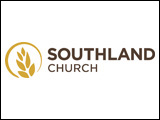One thousand free heart defibrillators are being delivered to public places across the province as part of a provincial initiative to ensure crucial help for cardiac arrest victims is nearby.
Health Minister Theresa Oswald presented the first free defibrillator funded by the Manitoba government to Glenlawn Collegiate yesterday, as part of the provincial initiative to place 1,000 free life saving defibrillators in public places to ensure crucial help for cardiac arrest victims is nearby.
“You never know when or where cardiac arrest will happen. To ensure, during that critical time of need, a life-saving defibrillator will be close at hand, our government is adding 1,000 free defibrillators to public facilities all across the province,” said Oswald. “We know the chance of survival is increased by almost 75 per cent when a heart defibrillator is used with cardiopulmonary resuscitation. It can really mean the difference between life and death.”
The Manitoba government is providing over $1.3 million to the Heart and Stroke Foundation in Manitoba for 1,000 free defibrillators, to make it easier to acquire the life-saving devices for non-profit and community-owned public facilities that will soon be required to have an automated external defibrillator (AED) available on site under new provincial legislation.
“The placement of AEDs like this throughout the province is a great step toward creating a heart-safe environment and we fully support and thank the Manitoba government for recognizing this as an important public safety initiative. This first AED placement symbolizes our government’s commitment to creating a heart-safe environment for all Manitobans. This means more lives can be saved in this province,” said Debbie Brown, CEO of the Heart and Stroke Foundation in Manitoba.
The province of Manitoba was the first in the country to develop legislation to require high-traffic public facilities like schools, hockey arenas, community centres, fitness clubs and curling rinks to have a defibrillator on site. The Defibrillator Public Access Act also facilitates rapid public access to a defibrillator during an emergency by requiring signage to easily identify the location of the AED and requiring that they be registered so 911 operators can help a caller locate the life-saving machine during a cardiac arrest. Designated facilities have until Jan. 31, 2014, to install a defibrillator.
“Like all schools, we have parents, teachers, students and visitors at Glenlawn Collegiate morning, afternoon and evening. Having an AED device on site gives us peace of mind that we have the equipment we need should cardiac arrest ever strike” said Duane Brothers, superintendent for the Louis Riel School Division. “The Manitoba government’s funding for free defibrillators is making it much easier to afford installing defibrillators in all of our schools.”
The ministers noted, to date, applications for over 900 free defibrillators have already been approved by the Heart and Stroke Foundation for public facilities across the province. This includes over 500 AEDs for schools, over 200 for community and fitness centres, and over 100 for curling clubs, golf courses and other sports venues.
“The Heart and Stroke Foundation in Manitoba has been an important partner as we place 1,000 defibrillators across the province,” said Oswald.
A full list of designated public places required to have a defibrillator on site, as well as information about the types of defibrillators that are acceptable and how they must be installed and registered is available at www.gov.mb.ca/health/aed. Information about the free defibrillator initiative is available at www.heartandstroke.mb.ca/AEDlegislation.
Defibrillators deliver an electric shock to restart a stopped heart and are programmed to detect if a person is having an irregular heart rhythm that indicates potential cardiac arrest. AEDs offer step-by-step instructions so training is not required. If the AED does not detect a shockable heart rhythm, the machine does not deliver a shock.



